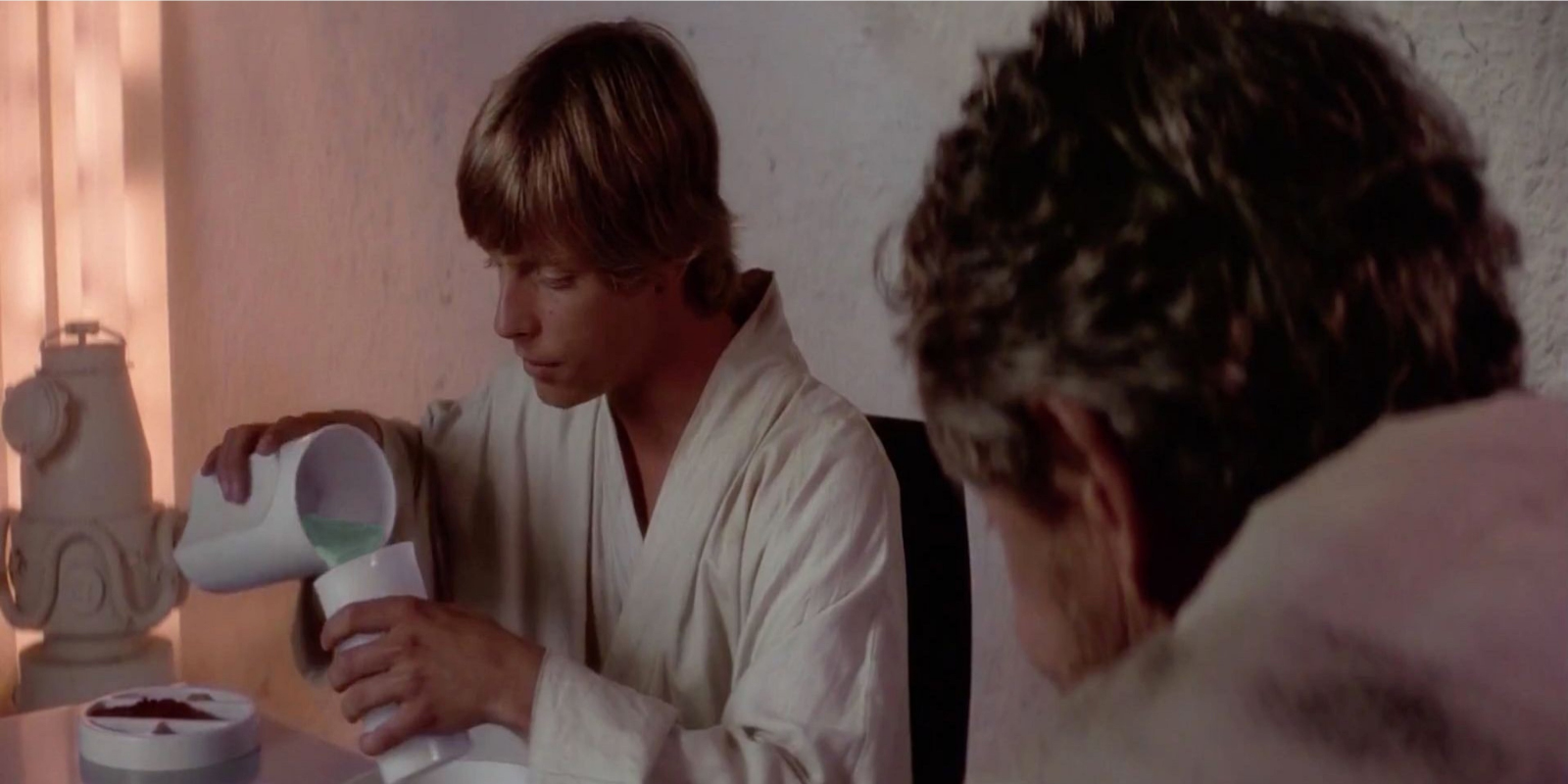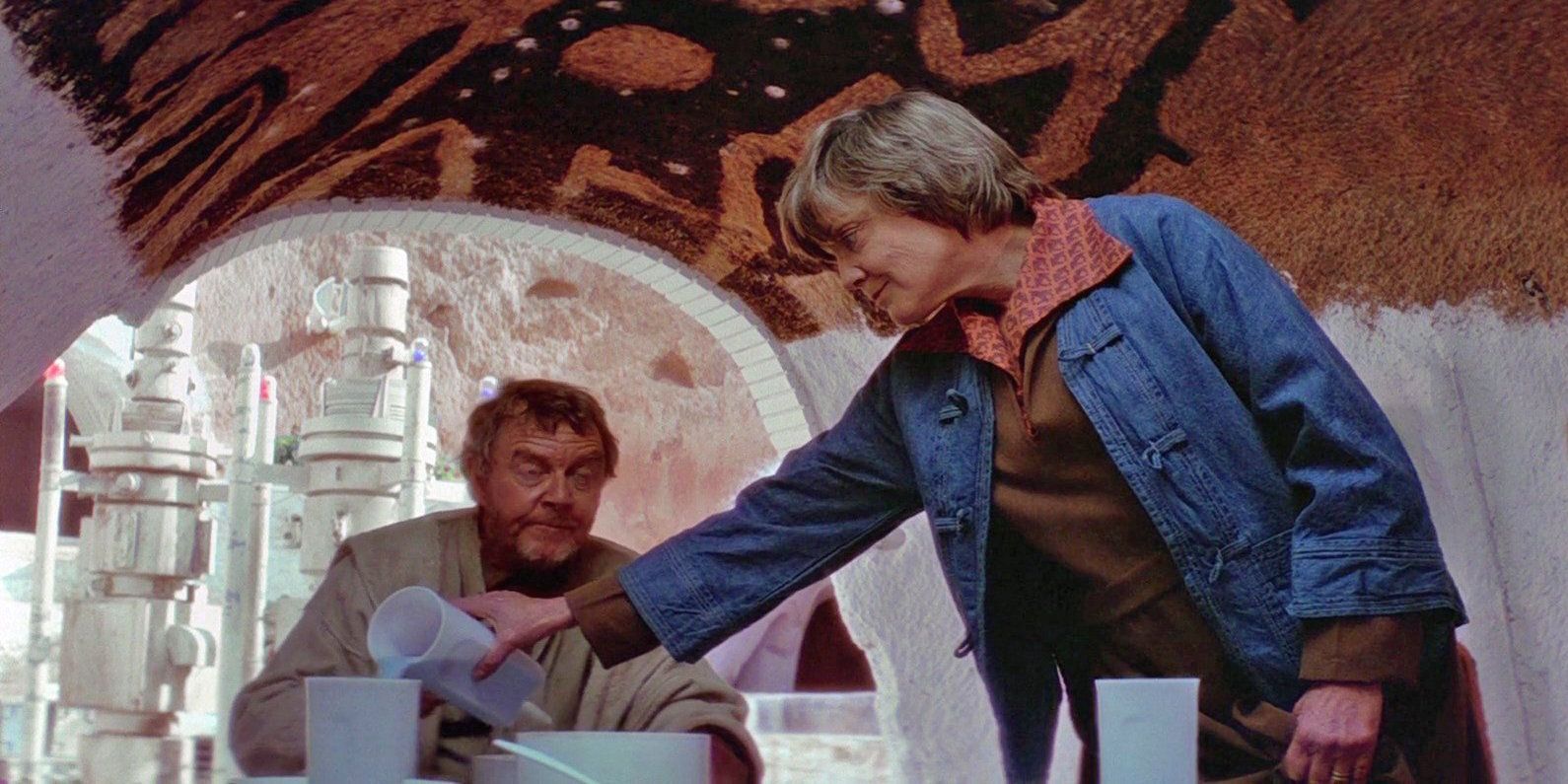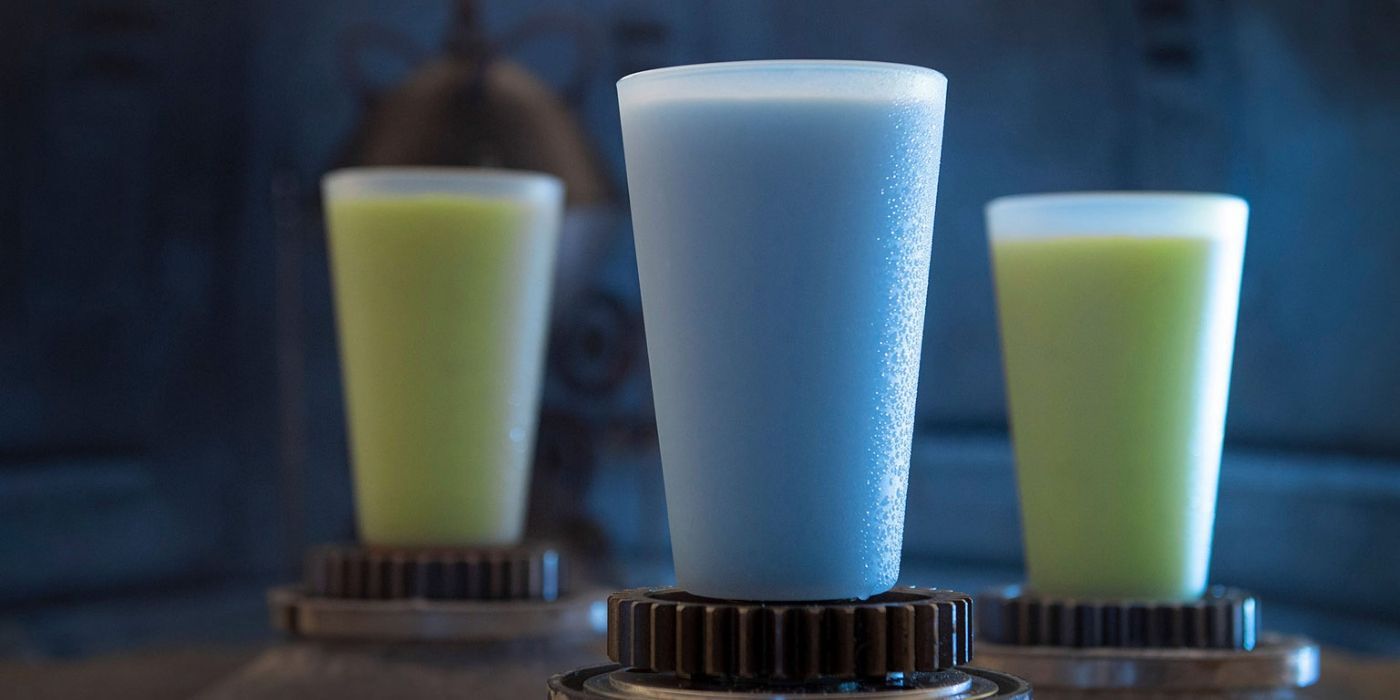Mark Hamill recently resurrected the specter of the mysterious blue milk from Star Wars: A New Hope, recalling what it actually was and, worse, how terrible it tasted.
"Blue milk was 'Long Life' milk (used by campers because no refrigeration is needed) with blue food coloring," the actor wrote on Twitter, in response to a question from a fan. "Oily, warm and slightly sweet, it literally made me gag, but I was determined to drink it on-camera. It was an acting challenge to appear as though I enjoyed it."
Long Life milk, or UHT milk, is milk that has been heated at more than 275 degrees Farenheit for two to five seconds, then packed in a sterile container. It has a shelf life of six months if unopened and unrefrigerated, which makes it an everyday staple in warm-weather countries like Tunisia, where parts of 1977's Star Wars were filmed. So, it makes sense, both from an in-universe and production standpoint, that UHT milk was the base of Tatooine's blue milk.
Within the Star Wars universe, blue milk comes from the bantha, a horned herbivore animal native to Tatooine. They were the preferred mount and companions of Tusken Raiders, with whom they shared a strange, mystical connection. In A New Hope, a single female Asian elephant named Mardji played all of the banthas.
Blue milk made a brief comeback during Anakin and Padme’s visit to Tatooine in 2002's Attack of the Clones, but tellingly, it remained untouched for the entire scene.
GOT GREEN MILK?
Hamill himself said, in the same Twitter thread, the green milk he chugged with gusto in 2017's The Last Jedi was much tastier than its blue predecessor. The scene in which Luke drinks the green milk was seared into the memory of audiences, but it still may be worth digging a little deeper.
In The Last Jedi, green milk is extracted from the Thala-sirens, massive mammals that roost in the sacred cliffs of Ahch-To. Thala-sirens are large but extremely docile because they have no predators. It's implied their green milk is an integral part of Luke's diet. The Thala-sirens were gigantic mechanical puppets, not CGI, and every move, texture and sound was handmade.
Sam Donahue, Senior Creatures Special FX for The Last Jedi, explained to The Nerdist the exhaustive process that they followed to design the Sirens, their mammary glands and the infamous milk: "We had to test very runny, very thin milk, moving on to very thick milk, very frothy, even with lumps inside [...] Rian was adamant that our hero, Luke Skywalker, visually drink milk in the film, so I personally tasted at least 30 different types of mammal milk, ranging from water buffalo to goat, all the way down to mini-donkey and weasel, just to get it right."
In the end, what Hamill drank on-camera was coconut milk, with the green tint added in post-production.
NOW, IF YOU NEED A DRINK (OR TWO) ...
You're in luck! Just head to Bantuu, located at Disneyland's Star Wars: Galaxy's Edge, and you will be able to enjoy both the green and blue milk for the Imperial price of $7.99.
According to John State, executive chef of Disneyland Resorts and Parks, the blue milk there is a slushy, frothy non-dairy concoction of coconut and rice milk, dragon fruit, pineapple and a bit of watermelon. It's been described as "sweet-tart," with a slight aspartame aftertaste. Green milk's flavor is limey, herbal and tangier than its sister's, and unlike the movie versions, apparently not as enjoyable.




